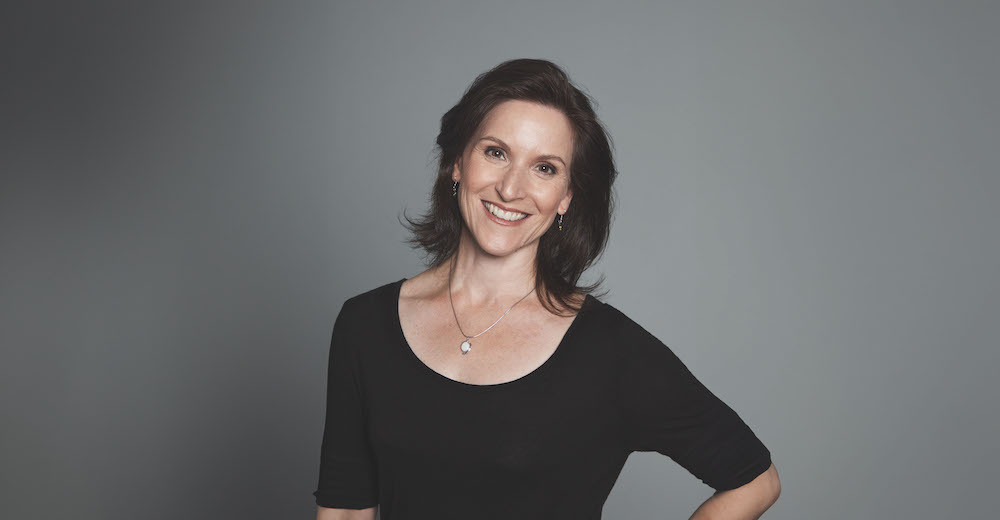You have probably heard a story like this before. “I danced around at home all the time when I was very, very young. Then my mum put me in calisthenics and from that I discovered ballet, and then I thought, ‘Hang on a minute, this is the real thing.’”
In a way, Megan Connelly is typical. In another, remarkable. For it is one thing to love dance; it is another to make it your life’s work. Thus, when she takes the reins as the new Artistic Director and Head of School at the nation’s premier dance training institution in July, it will coalesce her two principal passions.
Recalling her Year Seven history teacher, whom she now cites as an inspiration, Connelly reveals that she has always been interested in how people learn. “Somehow, the way my path meandered always brought me to helping someone discover themselves,” she says. “I think that’s my raison d’etre.”
Indeed, she lauds her teachers now as much as the onstage idols she remembers from girlhood. Amongst them, the famed instructor Marika Besobrasova, who invited the teenage Connelly to Monte Carlo to study Vaganova.
“So, I did that for 12 months, and that was really hard,” she remembers. “I was in the international boarding house, everything was in French, there was no email or text or that kind of thing. But I learnt so much through her.”
After returning home, she eventually landed a gig with The Australian Ballet. It was a dream come true…almost. “After a couple of years being in the corps de ballet, I kind of missed teaching; because I had taught all the way through my training. Even when I was at Marika’s in Monte Carlo, I taught on a Saturday morning.”
However, the company came calling again when her friend David McAllister was installed at the helm. “He said, ‘Look, I’ve just got this new gig as Artistic Director of The Australian Ballet and I need someone I can trust.’ So, I became his assistant. It was meant to be mainly administrative, but after two weeks the company were on tour in China, and so I ended up teaching class.”
Wind the clock forward to mid-2024, and Connelly is poised to bring her twin passions (and her varied experience) to the fore as she prepares to head up the prestigious Australian Ballet School.
Going forward, this will involve a further evolution of the brilliant work done by her predecessor, Lisa Pavane; namely, the whole of person approach that both the school and the company have championed for a number of years. As she explains, “Everyone finds their way in their own way and in their own time; and I think The Australian Ballet really supports everyone in this regard. It’s not cookie cutter. It’s really dealing with the human being first.”
For The Australian Ballet School, whose charges are mostly adolescent, the terrain of training and care can be fraught. Classical ballet is an elite physical pursuit, with a rigour and discipline at its core that can sometimes be at odds with the normal maturation curve most of us go through.
“I think there’s a lot more compassion and empathy in teaching classical ballet in particular, which is something that comes naturally to me,” Connelly notes. “It can help adolescents to navigate these critical years in their lives.”
Pondering her decades in both ballet and training, Connelly observes, “These days, it’s more dropping into how we feel, how we think about ourselves and what kind of dancer we want to become. I think the actual teaching methodology has evolved to allow the dancers a voice. In the studio, it’s teamwork. Teaching is a conversation. The days of authoritarian teaching are over. Thankfully.”
If the pedagogy of dance has changed, the same might be said of the form itself. If not wholly, at least partly. The notoriously narrow and perfectionist image of the ballet body is being re-thought, and institutions like The Australian Ballet School sit at the leading edge of this.
“Diversity and inclusion is the next thing for ballet to figure out,” Connelly declares. “How do we move forward in this space and value every individual and maintain the relevance of ballet to the young artists coming into the school, and to the wider community?” She takes a short pause for breath before adding, “But I don’t have all the answers to that yet.”
Sitting in a meeting room on the fourth floor of The Australian Ballet School’s Southbank campus in Melbourne, things feel slick and contemporary, almost corporate. A world away from crumbling Russian theatres and fairytale princess land. But appearances can be deceptive. For Connelly, the job is not about mere product.
“Remember,” she says, “we’re here to create art, not perfection. Perfection is boring. We want to see vulnerability. We want to see push and pull. We want to see that tenuous moment between two moments; that’s what really moves us.”
By Paul Ransom of Dance Informa.

















